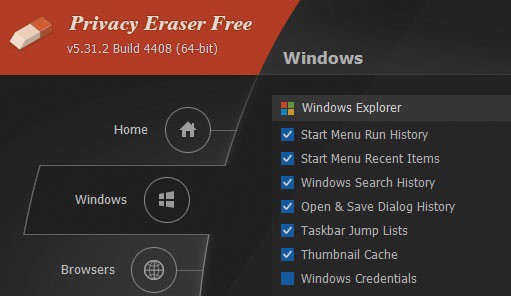Erase ALL Your PRIVATE DATA
Remove personal data from your PC to prevent others from seeing it. Robert Irvine explains how to remove all trace of your activities using two free tools
WHAT YOU CAN DO
• Wipe details of recently opened files and programs
• Overwrite deleted data to make it impossible for others to recover
• Remove leftover traces from the Windows registry
• Delete unwanted tracking cookies while retaining essential ones
• Erase your browsing history from all your browsers
• Delete stored passwords and info you type into online forms
• Shred files and folders containing sensitive data
ANYONE WHO WANTS to know what you’ve been doing on your computer—both online and offline—can find out in just a matter of seconds. Your PC stores details of all your Windows and web activities, including the files you open, the sites you visit, and the software you use, and makes this information easy for you to access. However, this also makes it easy for others to access, which significantly compromises your privacy, even if you have nothing to hide.
Manually deleting personal data from all the programs you use can be time-consuming and confusing, and traces of your activities are inevitably left behind, allowing savvy snoopers to see exactly what you’ve been up to. To completely erase all these elements so they can’t be recovered, you need a dedicated privacy cleaner. Thankfully there are two excellent free tools available.
Privacy Eraser (www.cybertronsoft. com/) and PrivaZer (privazer.com/en/index.php) will both purge your PC of all private data and leftover traces, including temporary files, tracking cookies, and usage logs.
In this feature, we reveal the options you can use in both programs to perform the most thorough clean-up possible and hide all details of your activities from prying eyes. We’ll explain which boxes you need to tick, where to find them, and how to ensure you don’t erase more—or less— data than you intend.
ERASE WHAT YOU DO IN WINDOWS
Recently opened files and programs The logical place to start when removing details of your Windows activities is the Start menu, which shows anyone who uses your PC the programs you’ve recently added and those you use most often. Windows 11’s Start menu also lists Recommended items, including recently opened files.
Further information about what you’ve been doing is revealed by the Jump Lists that open when you right-click the taskbar or Start-menu icons for programs and File Explorer. These list files, folders, and links you opened recently or use frequently, so you can access them quickly, but they also compromise your privacy by letting others access those items.
In Privacy Eraser, you can wipe this data in the Windows Explorer section of the Windows tab (see screenshot above). Select the options Start Menu Recent Items and Taskbar Jump Lists before you run a clean-up with the program. It’s also worth ticking the boxes for the following: Windows Search History, to stop anyone from seeing which items you’ve searched for; Start Menu Run History, if you’ve used the Run tool in Windows to access private files and folders; and ‘Open & Save Dialog History’, to delete the file history from the Open and Save dialogue boxes.

Delete recently used histories to stop people seeing which files you’ve opened
PrivaZer also lets you delete details of recently opened files and programs. Click ‘Scan specific traces’ on the home screen, choose ‘Software use’, and select ‘Start JumpLists, Quick Access’. Tick the box next to ‘Start menu’ to wipe usage data from the menu and the taskbar, then choose the Jump Lists you want to delete, such as for Windows Explorer (File Explorer), specific programs, or all Jump Lists on your computer. Select ‘Windows history’ to remove details of your recent searches, Run history, and the files and directories (folders) you’ve used.
Hidden data stored in Windows One of Privacy Eraser’s greatest strengths is that it wipes personal data from Windows you may have forgotten about but that can still be accessed by other people. For example, you may have copied sensitive information to the Clipboard that anyone can then paste elsewhere by pressing Ctrl+V. If they’re particularly nosey, they can press Windows key+V to open your Clipboard history and see the last 25 items you’ve copied. To stop this happening, select Clipboard in the Windows System section of the Windows tab to erase your Clipboard history.